The Landed Buggy
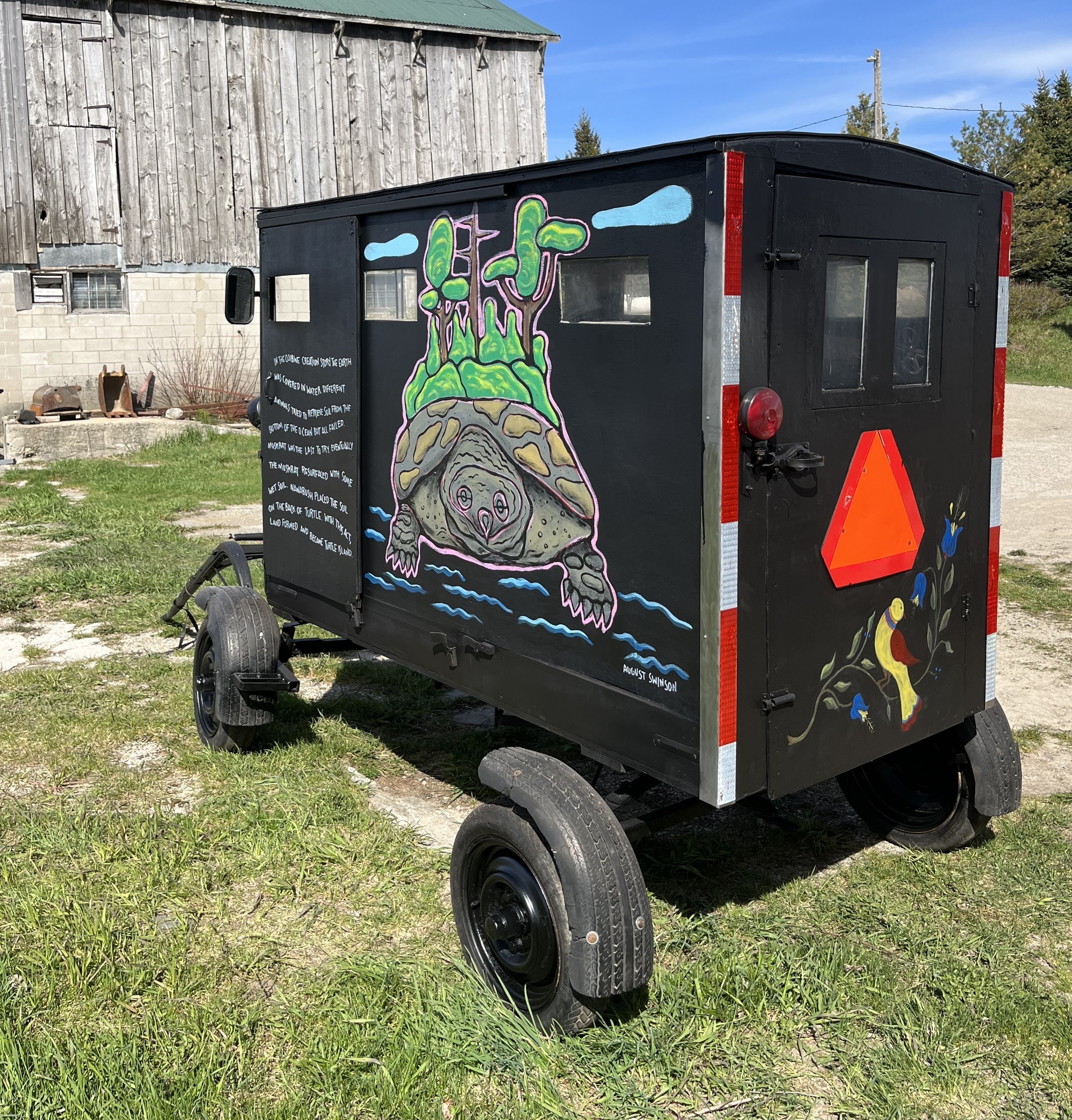
Why use a buggy? This is an artistic land acknowledgment that reflects a web of connections. It is a piece that is particular to a specific group of people – Swiss Mennonites, my ancestors, who migrated from Pennsylvania to the Waterloo Region in the early 1800s. The buggy evokes images of a quiet, farming people devoted to simple living on the land.
For Swiss Mennonites who settled here years ago, we pass on narratives of the land, how we acquired it and ways that we care for it. This installation encourages reflection and questions such as the following:
In what ways have our past/present stories between Indigenous and Mennonite peoples been told?
Are there ideas that need to shift or be broadened or challenged?
How can shifting our narrative inform our future together?
An Old Order Mennonite friend identified this style of buggy as a schüle kuch, or a school bus for young students. One Indigenous artist described this buggy project as “transportation toward reconciliation” – the buggy, a vehicle for learning.
Before its launch at the Indigenous-Mennonite Encounters Conference at Conrad Grebel University College on May 12-16, 2022, this project included conversations with various people – Anishinaabe, Haudenosaunee, Cree, Old Order Mennonites, Markham Mennonites, recent newcomers to Canada and many others.
BACK: Where did we come from?
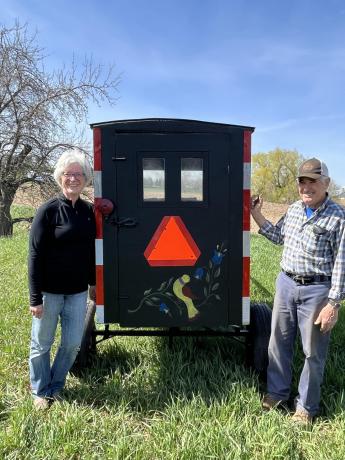
The back of the buggy represents a past before landing in Waterloo Region. The artwork, painted by Jeanette Seiling, displays a Pennsylvania German style of fraktur art and reflects Swiss Mennonite origins and connections to place. The symbolism in fraktur is often related to the land. This design features a distelfink (goldfinch bird) who ate thistle seeds in crop fields and was considered by farmers to be good luck. The “trinity tulips'' symbolize faith in yourself, faith in others and faith in what you do. The tulip is seen as a spiritual flower, a symbol of our search for God and the promise of paradise.
The yield sign holds teachings too. For early Anabaptists (the root group for Mennonites), gelassenheit was a principle of faith, encouraging a yieldedness to God and to the church community and a posture of acceptance. This sign also reflects the intersection of two worlds that are often held in tension: church and state. Plain communities like the Old Order Mennonites have submitted to the law of the Canadian government by placing these signs on their buggies.
Jeanette Seiling, Swiss Mennonite artist: Jeanette is a grandmother and mother who grew up in St. Jacobs and lives on a farm near Elora, ON. Fraktur art has been in her family for generations. Nature and Mennonite traditions are close to her heart. Her husband Ron was instrumental in the creation of this buggy project.
SIDES: Where did we land?

The two sides of the buggy represent two people groups, Haudenosaunee and Anishinaabe, who have a much longer history in this place and who remain here to this day. This installation seeks to recognize and honour these Original Peoples for ongoing contributions, deep traditional knowledge, laws and land-based teachings. We are all treaty people with responsibilities to uphold.
Turtle Island, designed and painted by Anishinaabe artist August Swinson, is a depiction of the Ojibwe/Anishinaabe creation story where land is created and flourishes on the back of a turtle.
In the Ojibwe creation story the Earth was covered in water. Different animals tried to retrieve soil from the bottom of the ocean, but all failed. Muskrat was the last to try. Eventually, the muskrat resurfaced with some wet soil. Nanabush placed the soil on the back of the turtle. With this act, land formed and became Turtle Island.
August Swinson, Anishinaabe artist: “I grew up on the small reserve of the Mississaugas of Scugog Island First Nation. Early memories of life connected to nature have influenced my work as an artist. Nostalgic images of chopping and carrying wood, canoeing with my grandfather or scrambling over rock with my siblings on the islands that dot the lakes of the Kawarthas. A career as a graphic designer and later as an illustrator, I now spend time in studio and reconnecting with my love of, and being inspired by, nature.” Instagram: @augustillustrated
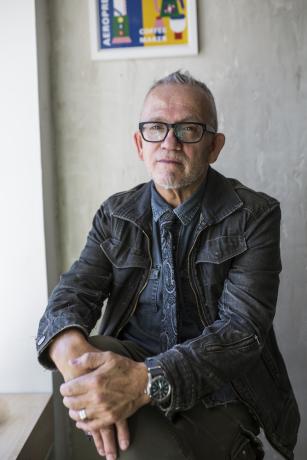

Six Nations Flag, designed and painted by Onondaga Chief Arnold Jacobs, represents Haudenosaunee teachings and history, including the Haldimand Proclamation of 1784. Arnold explains his work:
“The orange at the core represents the fire, or the desire to unite us all. The purple circle surrounding the fire is derived from the original Hiawenta Wampum Belt. The “Six Nations” are represented as being connected to one another through brotherhood. The green on both sides represents our land from Dunnville to Dundalk, according to the Haldimand Proclamation, six miles on either side of the winding blue ribbon which represents the Grand River. This fits our saying: ‘The land is ours as long as the sun shines, the grass grows and the river flows.’ The purple bars, top and bottom, represent the Two Row Wampum. The Two Row represents two cultures that can live side by side along this river, not interfering with beliefs or government. One row represents non-Native culture and the other represents our culture and the path we follow.”
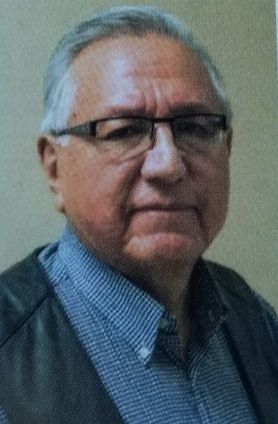
Arnold Jacobs, Onondaga artist: Arnold Jacobs is a Ho:yani or Condoled Chief carrying the title Skanawadi for the Onondaga Nation at Six Nations of the Grand River Territory. Raised in the traditional society of the Ogweho:weh Civilization and steeped in its languages, Arnold’s art expresses his connection to his spirituality and its theology. His symbols of the earth and sky, water, wind, thunder, moon and sun, along with other related themes, depict the traditional ways of his people, their clans and their collective intellect. Two Turtle Haudenosaunee Fine Art
FRONT: Where do we go from here?
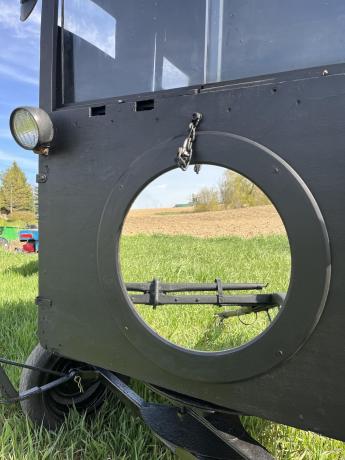
Facing the front of the buggy orients you to the past depicted on the sides and back. This installation invites you to broaden and challenge your view of this complex history, and to look ahead with this in mind. Through this mirror, take a look at your feet on the land and imagine a way forward – together – as Indigenous and non-Indigenous peoples.
- What is your connection to land?
- As you see yourself on the land, what futures can you imagine?

